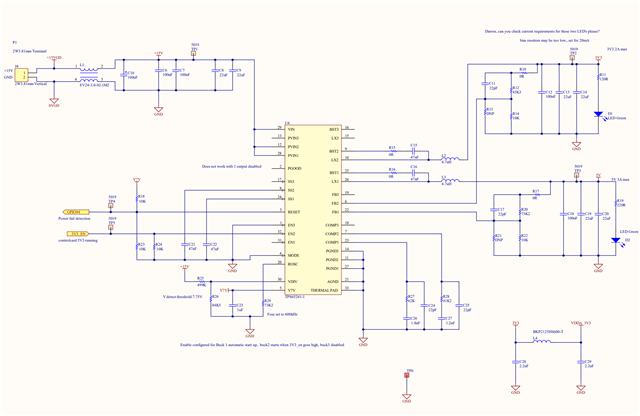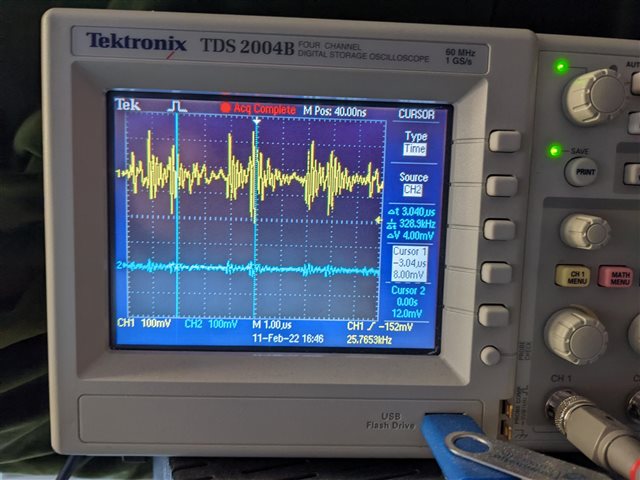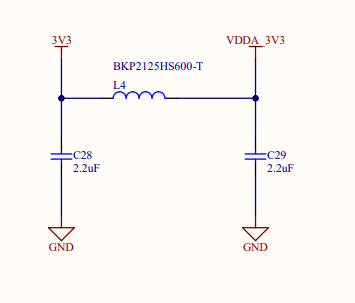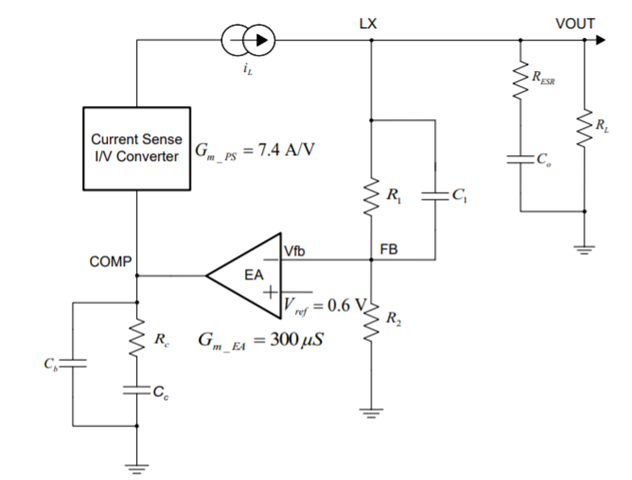Other Parts Discussed in Thread: AMC3301, TPS65261, TPS65263
Hello,
I'm a relative newbie to using these devices and wanted to configure it originally for 1.5V, 3V3 and 5V, some way into the design, we ditched the 1.5V so are only using outputs 1 and 2. for 5V and 3V3 respectively. I bought and configured a TPS65261-1 EVM pretty much along the lines suggested by your own documents and it all seemed to work ok. Now I seem to be encountering some significant voltage ripple in the actual application and am wondering if you could take a look and maybe offer some suggestions as to why this might be?
The circuit we have is as below:

The 3V3 loading is not that high at the moment, maybe 0.5A or so.
The 5V feeds an RDC sensor (AD2S1210 )and a TMS control card with an F28379D to generate the onboard 3V3 and 1.5V which is used for the TI microprocessor.
The 3V3 load consists of various peripheral sensors, and interface devices with onboard converters e.g AMC3301's, ISO7840F isolation buffers etc, CAN interfaces, SPI buffers current sensors voltage sensors etc.
We do have a common ground between the TMS 3V3 circuit and this external 3V3 circuit.
Some indication of the issue:

Looking at the ripple only, we can see the 3V3 has ~300mv ripple which seems to have a repeating envelope at around 330kHz or so with the higher frequency at around 7MHz There is no obvious other cause for this e.g PWM operating, external power coupling etc, the micro is just sitting there not running any program.
Looking at the 5V output (which feeds the control board) this seems to be nice and stable.

We see a similar situation with the 15V input to the converter, this is from a separate isolating DC/DC converter but doesn't seem to be suffering excessive ripple.
Unfortunately, this ripple is upsetting the various sensors and polluting the analogue sensing circuits.
We have placed a couple of CLC filters to isolate some sensitive external sensors and devices as much as possible:


And I did wonder if these might be causing some ringing or instability, but at this stage I'm just not sure where to start. Any pointers you might be able to proffer would be welcome?
regards
Steve



